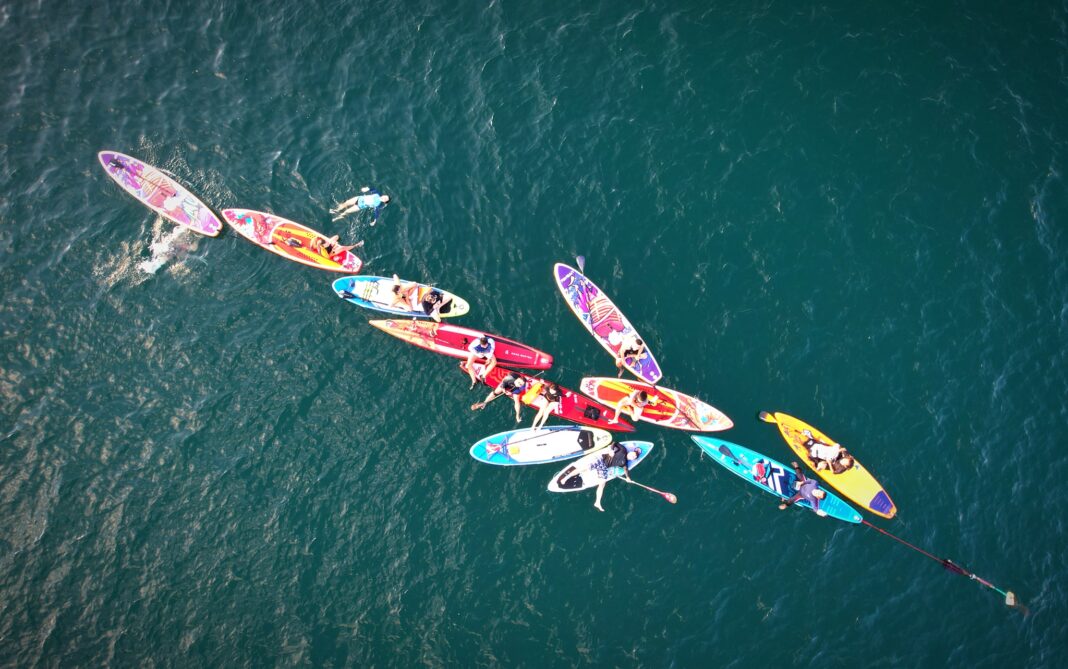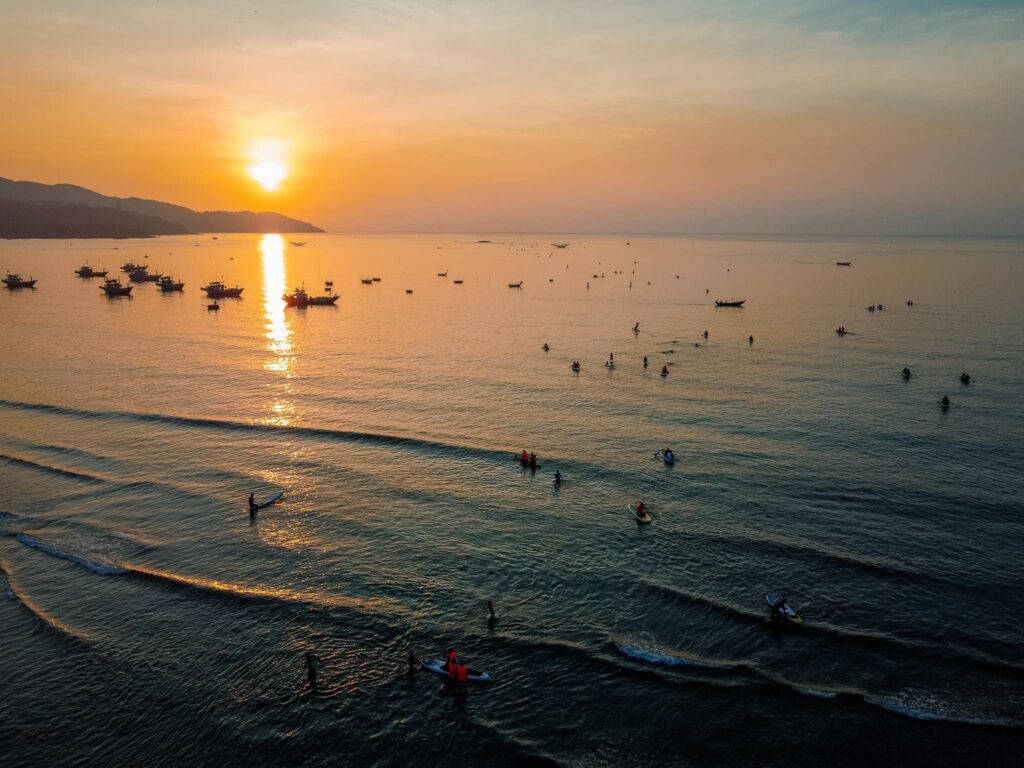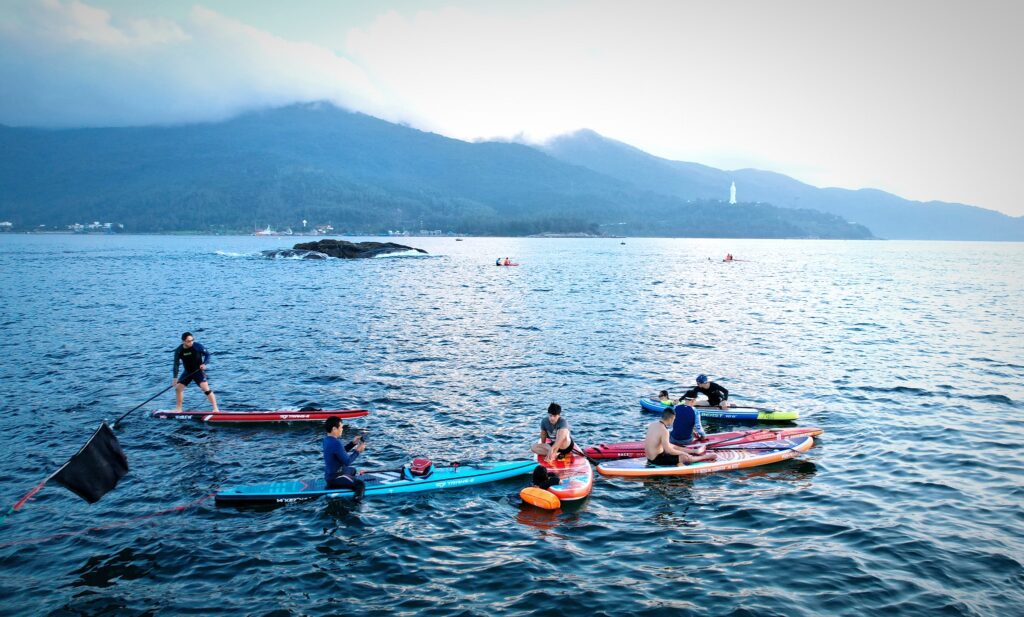A SUP is a board designed to be ridden in a body of water, usually the ocean or large lakes. Many consider it one of the few boards that can perform well in flatwater and whitewater conditions. It can go fast, just like a standard surfboard but functions more like a kayak at Da Nang beach. There are numerous items required to get started with the sport, which includes:
The Board – A SUP is a large board that can range from 10 to 12 feet. The size is important. Getting the largest board possible will allow you to stand and paddle easily on the water. On the other hand, a smaller board will be more difficult to progress. There are two types of boards: inflatable and racing. Inflatable boards come in all shapes and sizes and are less expensive. They are easier to store, transport, and sometimes repair.
The Paddle – The paddle is an important part of the SUP kit since it moves the board around to surf on different parts of the water surface. A SUP paddle is typically about 8 to 10 feet long. It has two parts and is adjustable for height to find the perfect length for you. Paddles are made of fibreglass, carbon fibre or wood. The most typical materials used to build paddles are fibreglass, carbon fibre, and wood, which are light, strong, and durable.
The PFD (Personal Flotation Device) – A PFD is a vest to which inflatable life jackets are attached. Inflatable life jackets must be inflated when needed before putting them on your body. This is done by filling it with air from a hand pump or simply blowing it into it until it is fully inflated. Your board will also come equipped with a PFD as part of its standard equipment.
The PFD does not strap directly to your body. Instead, it is designed to fit securely around your waist. The belt fits around your waste as well as your upper body. It will usually have additional straps to fit comfortably over different sizes of the human body. Some paddles will also have a small pouch at the back end, which can store other items, such as a cell phone or phone charger.
The Life Jacket – No matter your skill level, it is always good to wear a life jacket when paddling in areas where the water may be rough or deep. The life jacket is made of neoprene material that gives you the proper support and protection to navigate the water safely. A rescue board is often attached to your back for added protection in case of emergencies.
The Wetsuit: If you are going out on the ocean, a wetsuit will be necessary as most are normally very cold. Although technically optional, they are recommended for all surfers, regardless of their skill level or experience. It keeps you warm and is required if you are going to be paddling in cold waters.
The Helmet: Although many surfers use protective headgear, not many SUPers will do so due to the board’s design. A helmet may still be necessary for some people and other accidents like running into rocks or getting hit by a wave, etc..
Final Thoughts
Now that you have a board, paddle and PFD, you are ready to get started with Da Nang Activities. Practice will be key in learning how to SUP with any new skill. And while you will be able to stand up and ride the board easily, it’ll take some time before you can stand up while negotiating waves or getting above the lip of a wave.
Join Da Nang SUP club here: https://www.facebook.com/groups/danangsup











